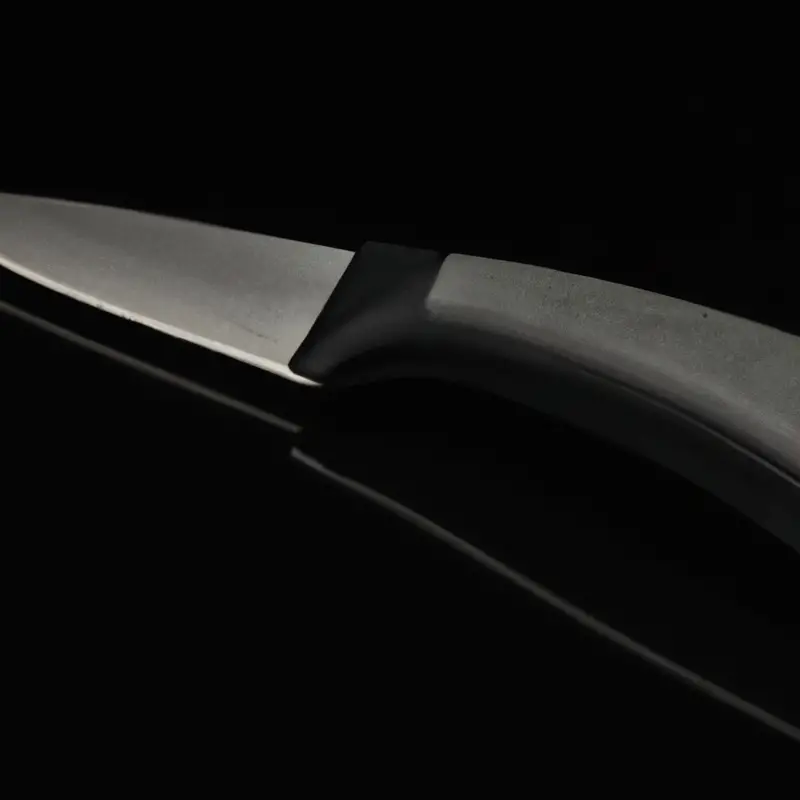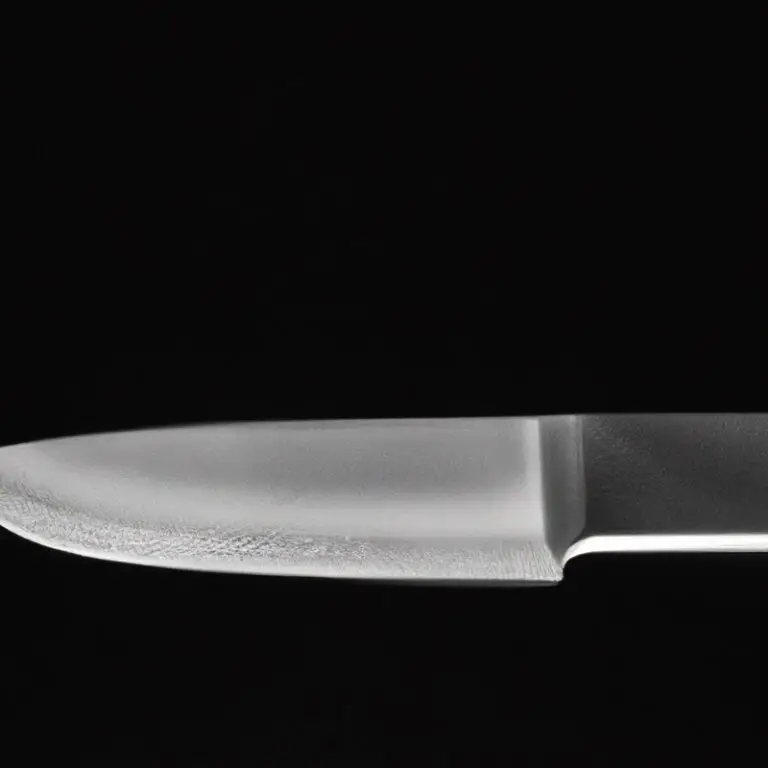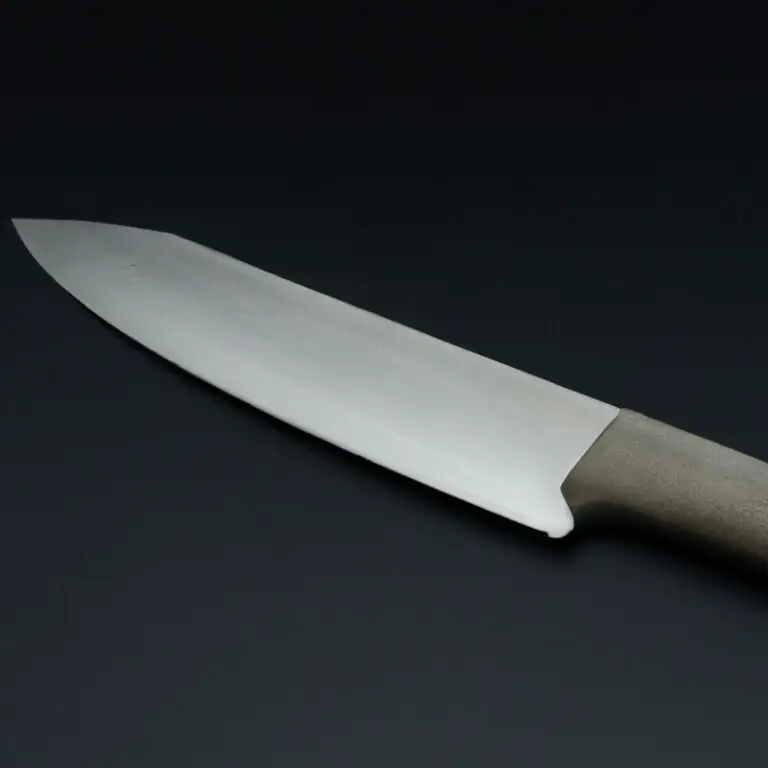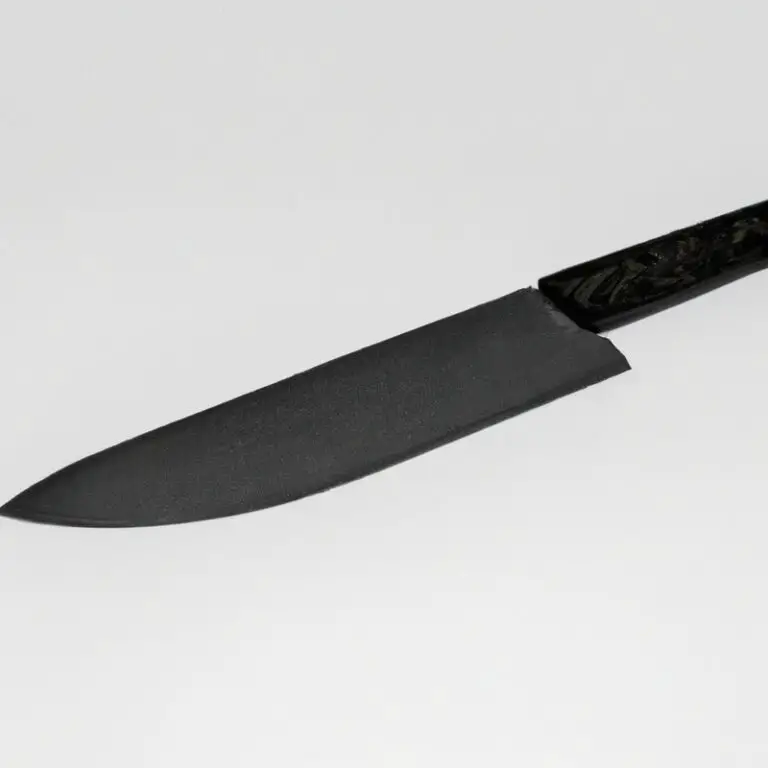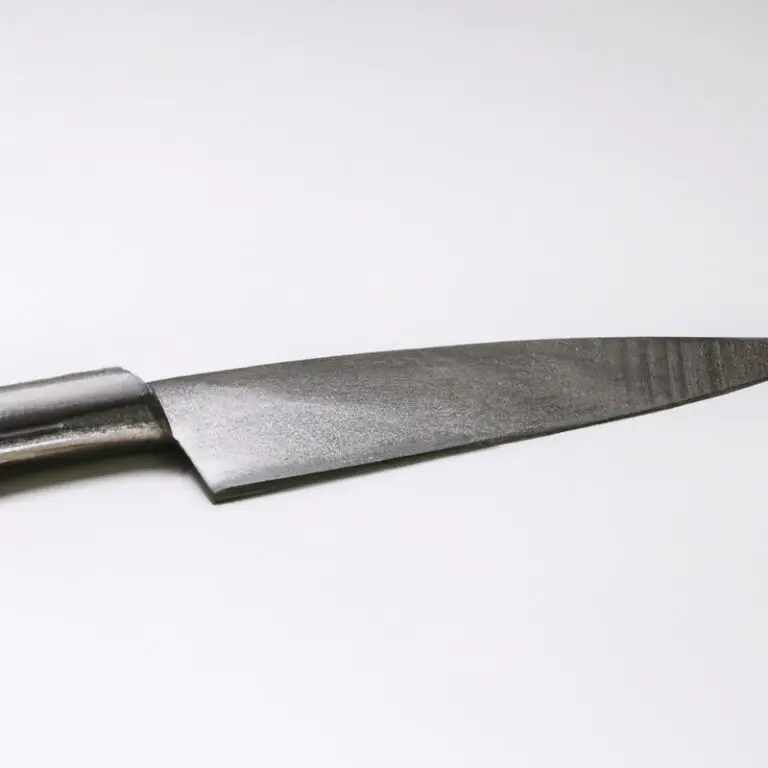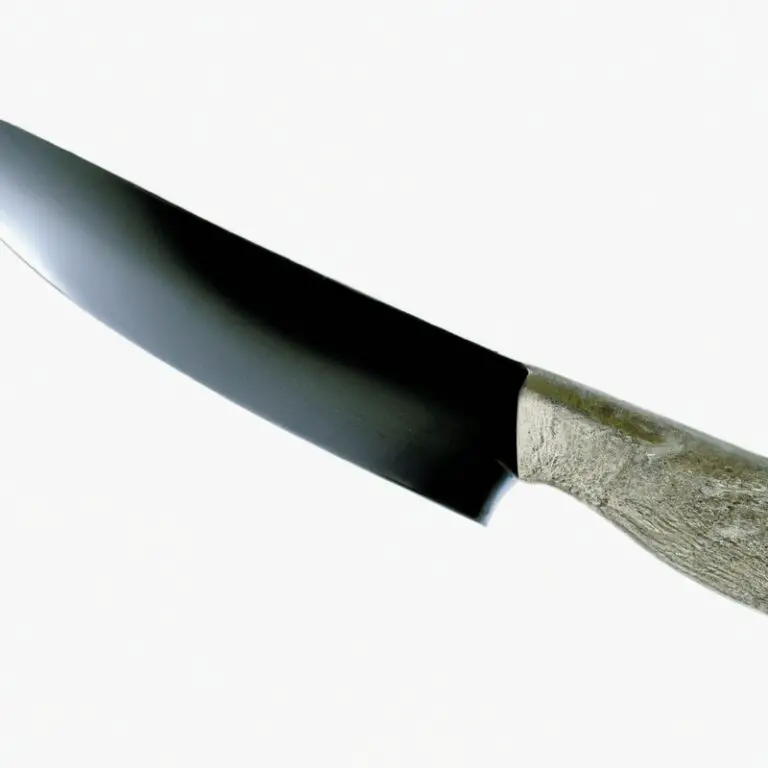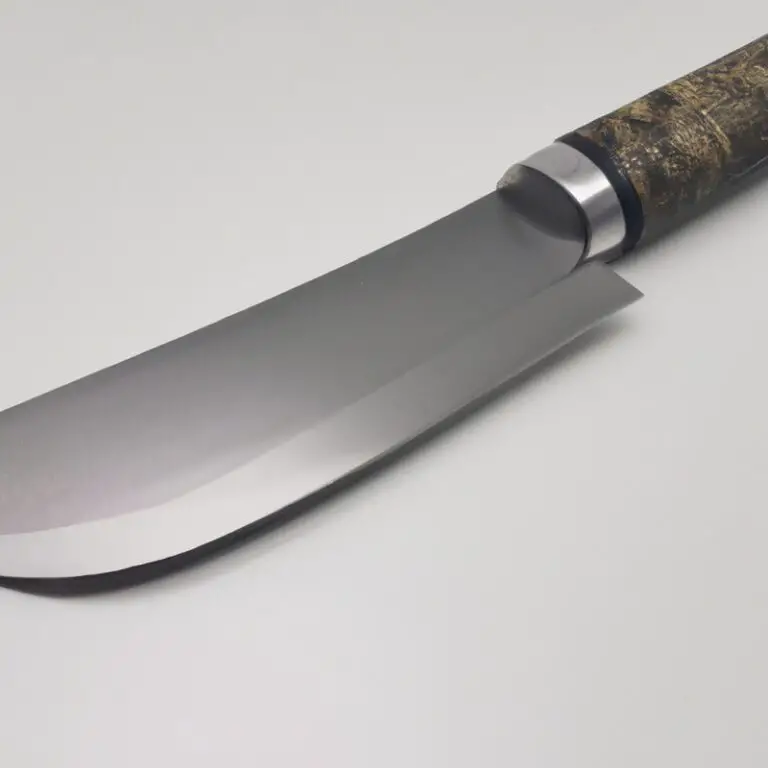How To Care For a Gyuto Knife? – Expert Tips
Key Takeaways:
- Keep your Gyuto knife sharp and clean to maximize its lifespan.
- Store your knife properly, either in a sheath or on a magnetic strip, to avoid damage and accidents.
- Use a cutting board made of wood or plastic to prevent dulling of the blade.
- Handle the knife with care to avoid injury to yourself or others.
Do you love cooking with Japanese knives? Then it’s essential to know how to care for a Gyuto knife properly.
This versatile chef’s knife is a must-have in the kitchen for any culinary enthusiast.
However, without proper maintenance, its performance may start to dwindle. Fear not! In this article, I will share with you some expert tips and tricks to keep your Gyuto knife sharp, clean, and rust-free.
From understanding its anatomy and selecting the right knife to sharpening, storing, and cleaning, we have got you covered! Let’s dive in.
| Step | Description |
| Clean and dry the knife after each use | Wash the blade of the knife with warm soapy water and dry it with a clean cloth. Always wipe it in the direction of the blade to avoid accidental cuts. Avoid soaking the knife in water or leaving it wet to prevent rust. |
| Sharpen the blade regularly | A sharp blade is essential for safe and efficient cutting. Use a sharpening stone or honing rod to keep the blade sharp. Remember to sharpen the blade at the correct angle to maintain its sharpness. |
| Store the knife safely and separately | Keep the knife in a knife block, sheath, or knife magnet to avoid damage or accidental cuts. Store it separate from other knives to avoid the blades touching each other. Avoid storing the knife in a drawer, where it can get damaged. |
| Use the right cutting board | Use a cutting board made of wood, bamboo, or plastic that is not too hard to prevent the blade from getting dull. Avoid using ceramic, metal, or glass cutting boards as they can easily dull the knife’s blade. |
| Avoid using the knife for tasks it’s not meant for | Gyuto knives are versatile and can be used for various cutting tasks. However, avoid using it to cut hard foods like bones, frozen food, or other items that can damage the blade. |
Understanding the anatomy of a Gyuto knife: A guide to different components of this Japanese kitchen tool
A Gyuto knife has different parts that make it an efficient kitchen tool. The blade, which is the sharp edge used for cutting, slicing, and chopping, has a pointed tip and a curved belly for efficient cutting.
The spine of the blade is thicker than the edge and can be used for tasks that require a bit of force.
The tang, which is the part of the blade that goes into the handle, can be full or partial, and it determines the balance and weight of the knife. The handle is where you grip the knife and can be made of various materials such as wood, plastic, or metal.
It is usually ergonomically designed to prevent slipping and provide comfort during use.
Finally, the bolster, located between the blade and handle, can provide stability and balance to the knife. Understanding the anatomy of a Gyuto knife can help you choose the right one for your needs and take better care of it to ensure longevity.
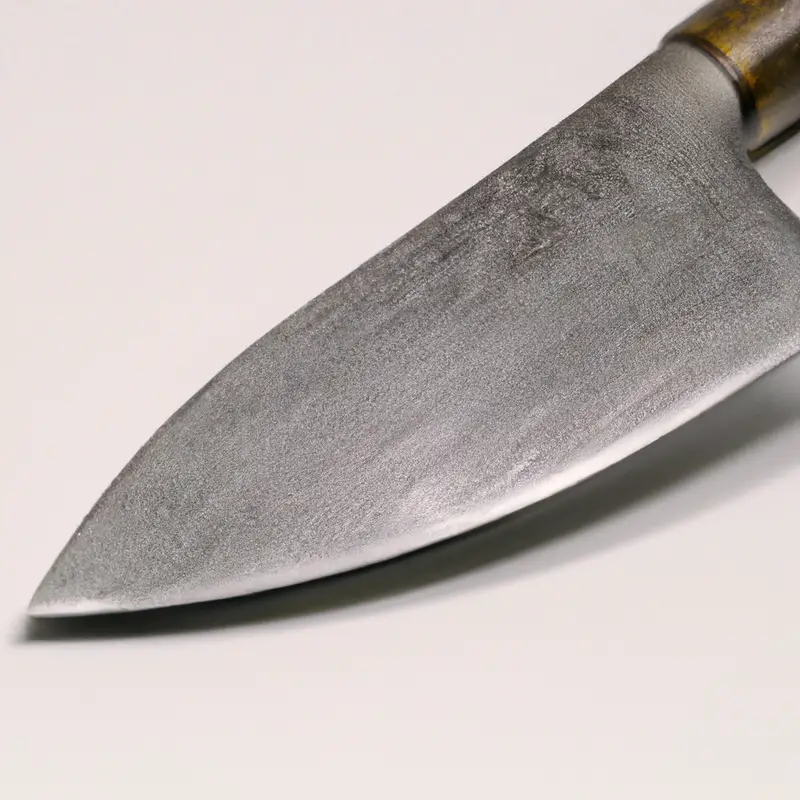
Choosing the right Gyuto knife for your needs: A comprehensive guide to selecting the perfect chef knife for your kitchen
When it comes to selecting the perfect Gyuto knife for your kitchen, there are a few factors to consider. The first is the material of the blade.
While stainless steel is durable and corrosion-resistant, high-carbon steel offers a sharper edge for precision cutting.
Another important feature to consider is the handle. The handle should provide a comfortable grip for extended use and be made of a durable and easy-to-clean material such as wood or synthetic resin.
Choosing the right size is also an important consideration.
Gyuto knives typically range from 7 to 10 inches in length, with shorter knives offering greater control and longer knives providing more surface area to work with. Finally, you should consider your personal preferences and cooking style when selecting a Gyuto knife.
Do you prefer a heavier or lighter knife?
Do you require a knife with a full tang or one that is more flexible? By answering these questions and considering the aforementioned factors, you can select the perfect Gyuto knife for your needs and enhance your culinary experience.
How to properly sharpen a Gyuto knife: Step-by-step instructions and best practices for keeping your blade razor-sharp
To properly sharpen your Gyuto knife, you will need a sharpening stone, honing rod, or electric sharpener. Follow these instructions for optimal results:
- Determine the sharpening angle of your knife. Generally, Gyuto knives have a 15-20 degree angle.
- Place the sharpening stone on a non-slip surface or secure it in a holder.
- Apply a few drops of water or oil to the stone.
- Hold the knife at the sharpening angle and glide it back and forth across the stone, starting at the base of the blade and ending at the tip. Repeat this motion on both sides of the blade.
- Use a honing rod to smooth out any rough edges and align the blade.
- Test the sharpness by slicing through a piece of paper or tomato.
- Wash and dry your knife after sharpening.
To maintain a razor-sharp edge, avoid cutting hard surfaces such as bone or frozen foods, and use a honing rod regularly to keep the edge aligned. Remember to always handle your sharp knife with care and use a cutting board to protect both the blade and your fingers.
How to store and protect your Gyuto knife: Tips and tricks for maintaining the quality and longevity of your knife
Proper storage and protection are essential to maintain the quality and longevity of your Gyuto knife. Here are some tips to keep your knife in great condition:
- Store your knife in a dry and secure place, preferably in a knife block or on a magnetic strip.
- Avoid storing your knife in a drawer or leaving it out on a countertop, as it can get knocked around and damaged.
- Always clean and dry your knife before storing it to prevent rust and corrosion.
- Use a protective knife sheath or blade guard when transporting or storing your knife, especially if it’s made of high-carbon steel.
- Do not leave your knife soaking in water or use abrasive cleaning materials that can scratch the blade.
By following these simple tips, you can ensure that your Gyuto knife remains in excellent condition for years to come.
The importance of cleaning and sanitizing your Gyuto knife: A guide to safe and effective cleaning practices
Cleaning and sanitizing your Gyuto knife is crucial for maintaining its quality and longevity. Not only does it prevent the buildup of bacteria, but it also ensures that your knife performs at its best.
To clean your Gyuto knife, use warm, soapy water and a non-abrasive sponge or cloth.
Never soak your knife, as this can cause rust and damage to the blade. After cleaning, dry the knife thoroughly with a clean cloth or towel to prevent rust buildup.
To sanitize, wipe the blade with a cloth soaked in a solution of one part vinegar and three parts water, then rinse with clean water and dry.
Avoid using harsh chemicals or abrasive materials on your knife, as these can damage the blade and handle. Following these safe and effective cleaning practices will extend the life of your Gyuto knife and keep it performing optimally for years to come.
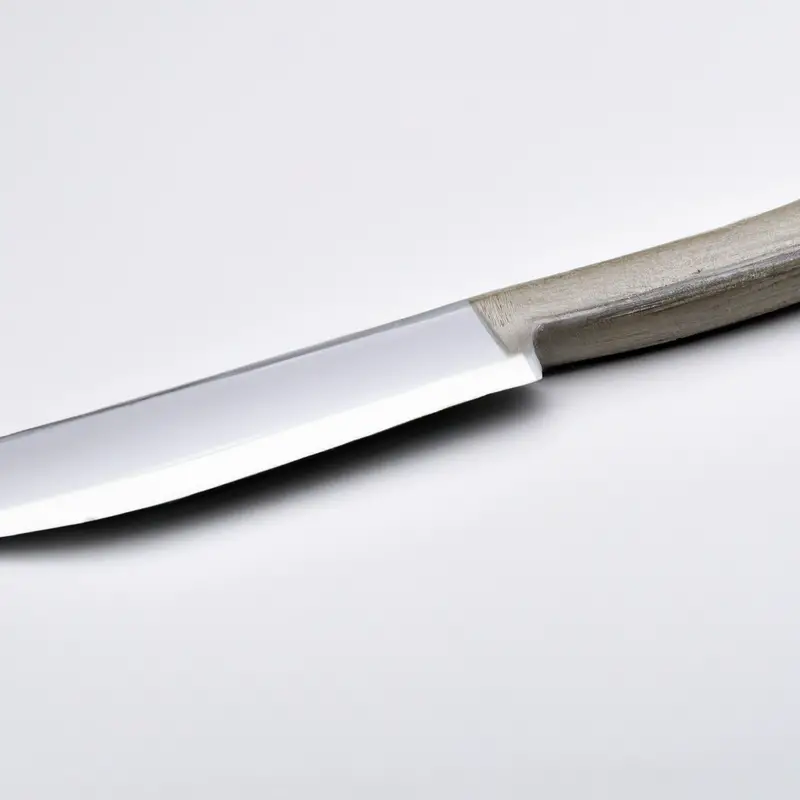
Tips for safe and proper use of a Gyuto knife: Recommendations for handling, cutting techniques, and avoiding accidents
To ensure safe and proper use of a Gyuto knife, here are some recommendations:
- Hold the knife firmly with all four fingers wrapped around the handle, while your thumb rests on the blade’s spine.
- Use a cutting board that is stable and secure.
- Avoid cutting bones as it can damage the blade and may cause injury.
- Keep your fingers away from the blade’s path when cutting.
- Use a slicing motion rather than chopping to maintain control of the blade.
- Clean and dry the knife after each use to prevent rust and corrosion.
- Store the knife in a sheath or magnetic strip to avoid accidents when reaching for it in a drawer.
Following these tips can help you use your Gyuto knife safely, efficiently, and for an extended period.
Common mistakes to avoid when caring for your Gyuto knife: Pitfalls to watch out for when using, storing, or cleaning your knife
Common mistakes can easily damage your Gyuto knife, affecting its performance and longevity. To ensure your knife stays in top shape for years to come, here are some common pitfalls to avoid when using, storing, or cleaning your knife:
- Using your Gyuto knife on a hard surface like a glass or ceramic cutting board can damage the blade and dull its edge. Instead, use a softer surface like a wooden or bamboo cutting board.
- Storing your Gyuto knife in a cluttered drawer with other utensils can cause it to get scratched or damaged. Consider investing in a knife block, magnetic strip, or protective sheath to keep your knife safe and secure.
- Leaving your Gyuto knife wet or dirty for an extended period can cause rust or corrosion. Always dry your knife thoroughly after cleaning, and never leave it soaking in water or other liquids.
- Using harsh chemicals or abrasive sponges when cleaning your Gyuto knife can damage the blade or handle. Stick to mild soap, warm water, and a soft sponge or cloth when cleaning your knife.
- Using your Gyuto knife for tasks it’s not designed for can cause it to chip or break. Don’t use it to cut bones, frozen food, or other hard materials. Use a specialized knife or utensil instead.
By avoiding these common mistakes, you can maintain the quality and performance of your Gyuto knife, ensuring it remains a valuable tool in your kitchen for years to come.
The benefits of owning and caring for a high-quality Gyuto knife: How investing in a quality knife can improve your culinary skills and overall enjoyment of cooking
Owning and caring for a high-quality Gyuto knife can significantly improve your culinary skills and overall enjoyment of cooking. Here are some benefits of investing in a quality knife:
- Precision and accuracy: A sharp and well-maintained Gyuto knife makes it easier to cut and slice ingredients with precision and accuracy.
- Versatility: Gyuto knives are versatile and can be used for a variety of tasks, making them an essential tool in every kitchen.
- Durability: Investing in a high-quality Gyuto knife ensures that it will last for a long time with proper care and maintenance.
- Improved safety: A sharp knife is safer than a dull one, as it requires less force and reduces the risk of slipping and accidents.
- Enhanced aesthetics: A well-cared-for Gyuto knife will look beautiful and add elegance to your kitchen.
Overall, owning and caring for a high-quality Gyuto knife is a worthwhile investment that can improve your cooking experience and enhance the quality of your dishes.
Gyuto knife maintenance tips from top chefs: Expert advice from professional chefs on how to care for, sharpen, and use your Gyuto knife to achieve culinary perfection
Maintaining the quality of a Gyuto knife is crucial to achieve culinary excellence. Here are the top tips from professional chefs on how to care for, sharpen, and use your Gyuto knife:
- Wash and dry your blade immediately after use to prevent rust or damage.
- Avoid using abrasive materials or dishwasher for cleaning as it can damage the blade’s surface.
- Store your knife in a knife block, magnetic stand, or a knife sheath to protect the blade from getting nicked.
- Keep the blade sharp by honing it regularly and sharpening it every few months using a whetstone or honing rod.
- Use the proper cutting techniques and avoid using the knife for tasks it’s not intended for.
- Don’t use a glass cutting board, as it can damage the blade’s edge.
- Avoid exposing the knife to extreme temperatures or leaving it in the sink or dishwasher.
By following these practical tips, not only do you keep your Gyuto knife in top shape, but you also enhance your culinary skills to achieve perfection in your dishes.
Final Verdict
Caring for your Gyuto knife is essential to maintaining its quality and prolonging its lifespan. By following the tips and best practices outlined in this guide, you can ensure that your knife continues to provide you with exceptional cutting performance and precision for years to come.
From properly sharpening and storing your knife to avoiding common mistakes and practicing safe cutting techniques, these are all crucial steps in maintaining your Gyuto knife.
As you continue to use and care for your knife, it will become an indispensable tool in your culinary pursuits. Trust in the expertise of professional chefs and the timeless traditions of Japanese craftsmanship to guide you on your journey to mastering the art of cooking with a Gyuto knife.

